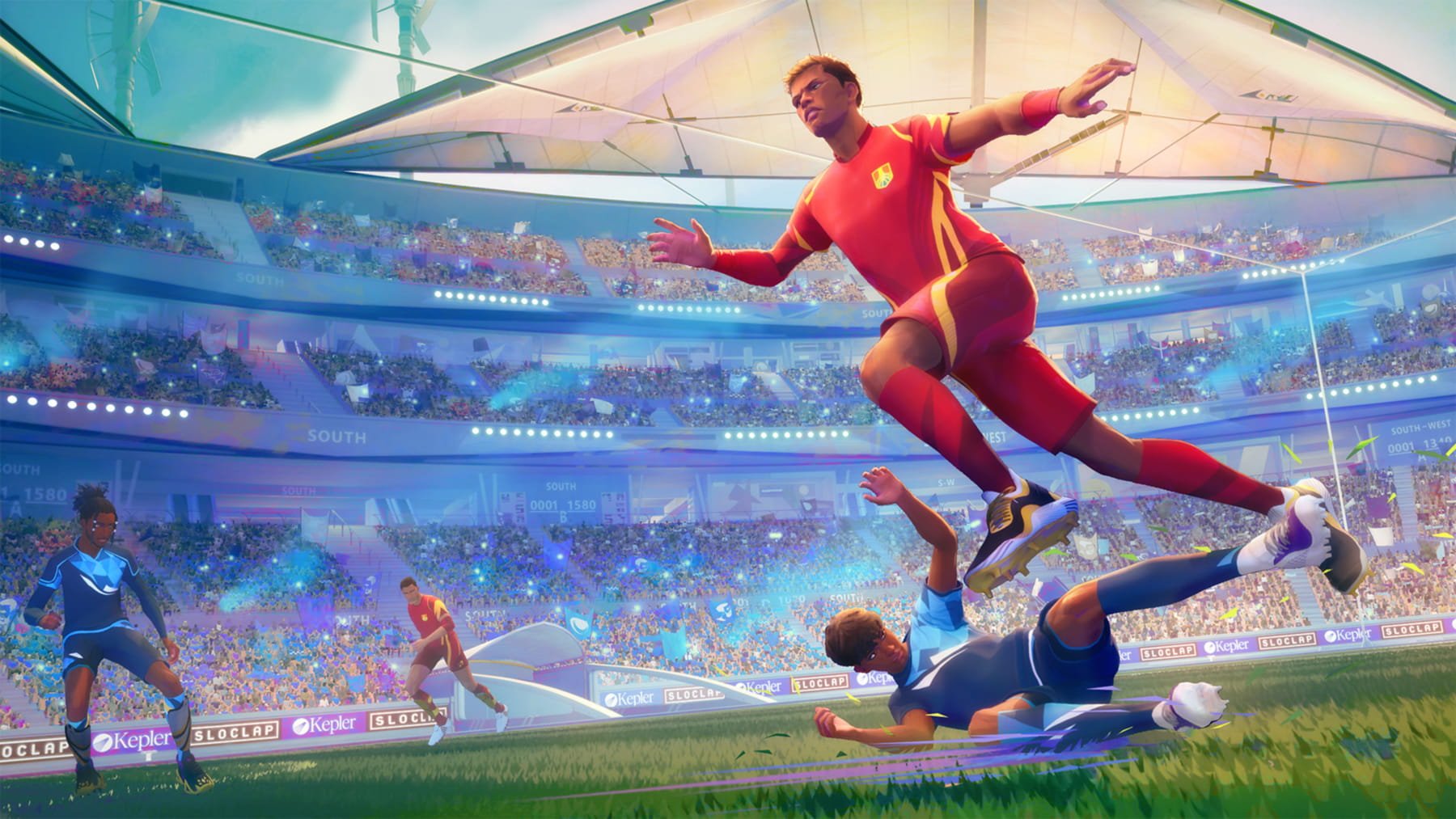In this Rematch beginner guide, we’ll walk you through the essential skills you need to master: how to receive and control the ball effectively, the best passing techniques, smart dribbling, sprinting strategies, and the importance of stamina management.
We’ll also explore how to use the walls to your advantage and cover defending tactics to help you protect your goal. Finally, we’ll share tips on communication and practice to help you and your team work as a cohesive unit. By the end of this guide, you’ll have the knowledge and confidence to enjoy Rematch and start climbing the ranks. Let’s dive in and learn how to dominate the pitch!
Rematch Beginner Guide: What is Rematch?
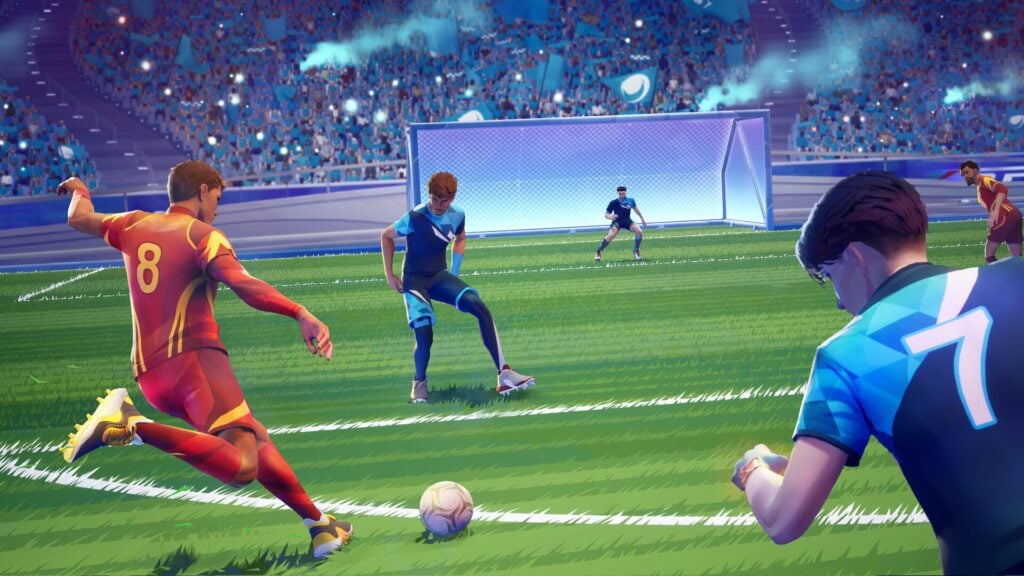
Rematch is a unique take on soccer that mixes traditional football mechanics with arcade-style elements inspired by games like Rocket League and Sloclap’s own Sifu. Played in teams of 3v3, 4v4, or 5v5, the goal is simple: collaborate with your teammates to kick the ball, score goals, and celebrate victory. However, unlike casual weekend soccer, Rematch demands mastery over precise ball control, clever use of the surrounding walls, and physical body mechanics that make your character feel real and responsive.
This Rematch beginner’s guide aims to help you get started with a strong foundation, focusing on mechanics and tactics that improve your gameplay quickly. Whether you’re new or looking to refine your skills, this guide will help you develop a well-rounded approach to matches.
Getting Started: Receiving and Controlling the Ball
One of the most challenging parts for newcomers in Rematch is reliably receiving passes. It’s not enough to simply line up your character; timing and finesse are essential. To receive passes effectively, use the X button (PS5) or A button (Xbox) to gently tap the ball when it comes to you. This slight touch can be angled with the left stick to break away from defenders immediately.
Trapping the ball is another vital skill. Hold the Left Trigger (L2/LT) and tap X/A to stop the ball at your feet instead of chasing it down. Timing is tricky at first, but once mastered, this control technique lets you maintain possession and set up quick passes or shots.
In this Rematch beginner’s guide, learning to control the ball smoothly is emphasized because possession is key to building successful plays.
Passing Like a Pro
Passing is the foundation of Rematch gameplay and arguably the most crucial skill to develop early. The passing controls are intuitive yet demand precision: tap X/Square for a quick pass directed by your stick. For lofted or lobbed passes, combine the pass button with RB/R1 to raise the ball off the ground. Short passes are executed by pressing A+X (Cross+Square), which can also be lobbed by adding RB/R1.
Pass speed depends on your player’s movement; sprinting increases pass velocity but lowers control. Mastering these passing mechanics in tutorials and freeplay modes helps you build fluid team coordination. This Rematch beginner’s guide repeatedly highlights passing as the key to success, warning against solo dribbles that frequently end in turnovers.
Dribbling and Skill Moves
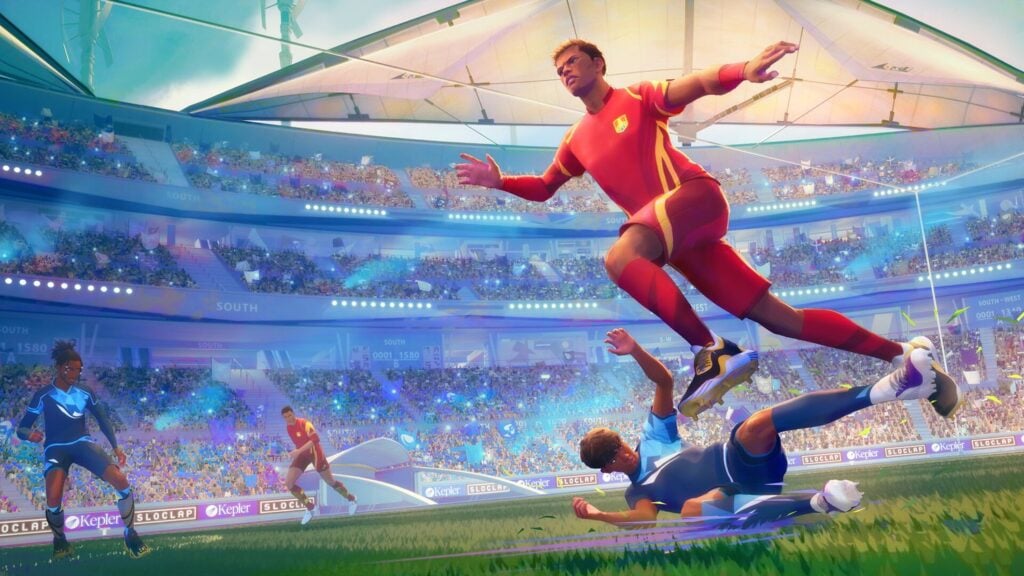
Once you have basic ball control and passing down, dribbling opens up more opportunities to outplay your opponents. The Rematch beginner’s guide stresses that dribbling has a high skill ceiling but is rewarding when used wisely.
Basic dribbling involves moving the left stick side-to-side to shift the ball and bait defenders. Holding L2/LT enters dribbling stance for advanced moves like the dragback; hold dribble, pull the stick back, then push forward to burst ahead; or the Ronaldo chop, performed by pressing A/X and flicking the stick left or right. The flashy rainbow flick move is risky for beginners, but can be practiced to maintain momentum by flicking the camera forward and back.
Early on, it’s often safer to rely on passing rather than aggressive dribbling. The Rematch beginner’s guide recommends using dribbling selectively until you’re confident with your timing.
Sprinting and Stamina Management
Sprinting wisely is vital for maintaining control and stamina during matches. The regular sprint lets you move faster while retaining ball control, but holding the sprint button continuously drains stamina. Alternatively, the Extra Effort Sprint, triggered by double-tapping sprint, provides a quick burst of speed without stamina cost. Use this boost to chase loose balls or reposition quickly, but note it’s short-lived.
Your stamina bar recharges when moving slowly, so conserve it for key moments, especially when defending. Sprinting recklessly with the ball will cause you to lose possession, so balance speed and control. This section of the Rematch beginner’s guide underlines stamina management as crucial to staying competitive throughout matches.
Using the Walls to Your Advantage
A defining feature of Rematch is its holographic walls surrounding the pitch, reminiscent of Rocket League. The walls aren’t just for show; they’re a strategic tool.
Use the walls to bounce passes around defenders or lob the ball over opponents’ heads. You can also execute deceptive shots by aiming near the top-center of the goal to confuse the goalkeeper and create rebound opportunities. Defensively, kicking the ball high off the wall can relieve pressure or reset play.
Mastering wall play adds a creative layer to your game, and this Rematch beginner’s guide encourages experimenting with wall angles and rebounds to surprise opponents.
Defending Like a Pro

Defending in Rematch is as important, if not more so, than offense. Holding LT/L2 puts you in a defensive stance for jockeying opponents and maintaining positioning. Use B/Circle to slide tackle, but sparingly; missing a slide leaves you vulnerable and out of position. Standing tackles by dropping sprint and holding a defensive stance can be just as effective.
Goalkeepers are unique; they can catch the ball with their hands and are immune to tackles. Press Y/Triangle to jump, intercept crosses, or head the ball. The Rematch beginner’s guide stresses patience in defense: avoid chasing the ball aimlessly, mark opposing players carefully, and conserve stamina to be ready for decisive plays.
Shooting: Curves and Fast Shots
Once you’ve mastered ball control and passing, shooting becomes a focal point. Curved shots involve holding the shoot button (Right Trigger) while moving the stick to bend the ball around goalkeepers. Fast shots are quick taps of the shoot button, ideal when time is tight near the goal.
Because aiming in Rematch links shooting direction to your camera angle and ball direction to your stick, practicing shot control is key. This guide advises practicing both curved and fast shots in free play to build accuracy.
Communication and Teamwork
Rematch is fundamentally a team sport, and communication makes all the difference. Use built-in voice chat to coordinate with teammates, or if you prefer not to speak, use the Ball Call command (click the right stick on controllers) to signal you want the ball. The mini-map helps track teammates’ positions and opponent movements.
Passing over ball hogging is emphasized repeatedly in this Rematch beginner’s guide. Efficient teamwork and communication unlock higher chances of scoring and winning.
Camera and Settings Tips
Optimizing your camera settings in Rematch is crucial for enhancing situational awareness and overall gameplay performance. One of the most effective adjustments is maximizing the Field of View (FOV) slider to its highest value, typically 90. This wider field of view allows you to see more of the pitch at once, giving you a better sense of where teammates, opponents, and the ball are located. With improved peripheral vision, you can anticipate plays and react faster to sudden changes in the game.
Additionally, increasing the camera speed in the options menu helps your view track the ball and moving players more quickly, especially when using a controller. A faster camera means smoother transitions and less delay when shifting focus between action points, which is vital during fast-paced moments.
Tweaking these settings according to your preference can significantly boost your reaction time, situational awareness, and overall fluidity, helping you make smarter decisions and stay one step ahead in matches.
Practice Makes Perfect
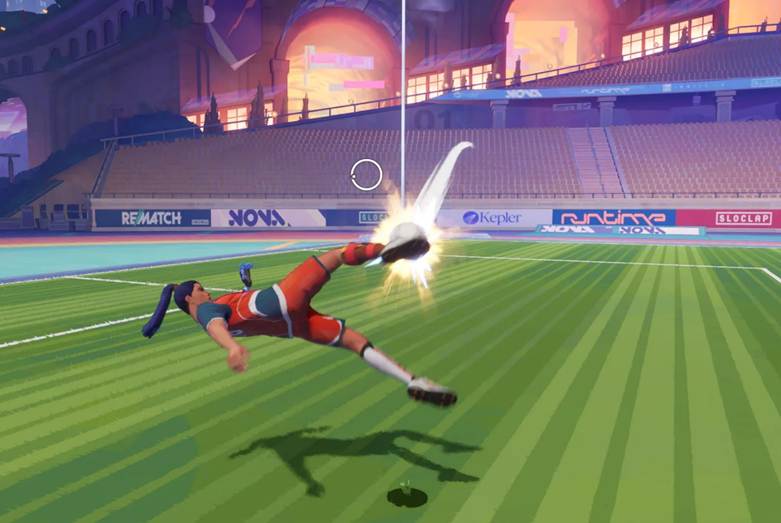
Mastering Rematch takes time. Complete all tutorials to learn core mechanics step-by-step, then spend ample time in Freeplay mode practicing passing, shooting, dribbling, and goalkeeping. Practice catching and diving as a goalkeeper by shooting balls against the wall, and play custom matches with friends to refine teamwork and scenario handling.
The more you practice, the more natural your character’s movements and decision-making will become. This Rematch beginner’s guide encourages patience and persistent practice as keys to improvement.
Character Familiarity and Flexibility
In Rematch, the realistic character physics make your player’s body a vital part of your overall gameplay strategy. Understanding how your character moves, how they run, stop, jump, and change direction, is essential to gaining an edge over opponents. Each movement feels weighty and responsive, so mastering the timing and fluidity of your actions will improve your effectiveness on the pitch. Beyond basic movement, stamina management plays a crucial role; knowing when your player’s energy is low and adjusting your playstyle accordingly can be the difference between winning and losing key duels.
Rematch’s gameplay encourages versatility, as player roles are not fixed. Any player can switch between offensive and defensive duties or even take on the goalkeeper position if the situation demands it. This dynamic role-switching means you need to be comfortable adapting quickly to different responsibilities, maintaining awareness of your teammates and opponents alike. Developing this flexibility will make you a more valuable team player and greatly enhance your chances of success.
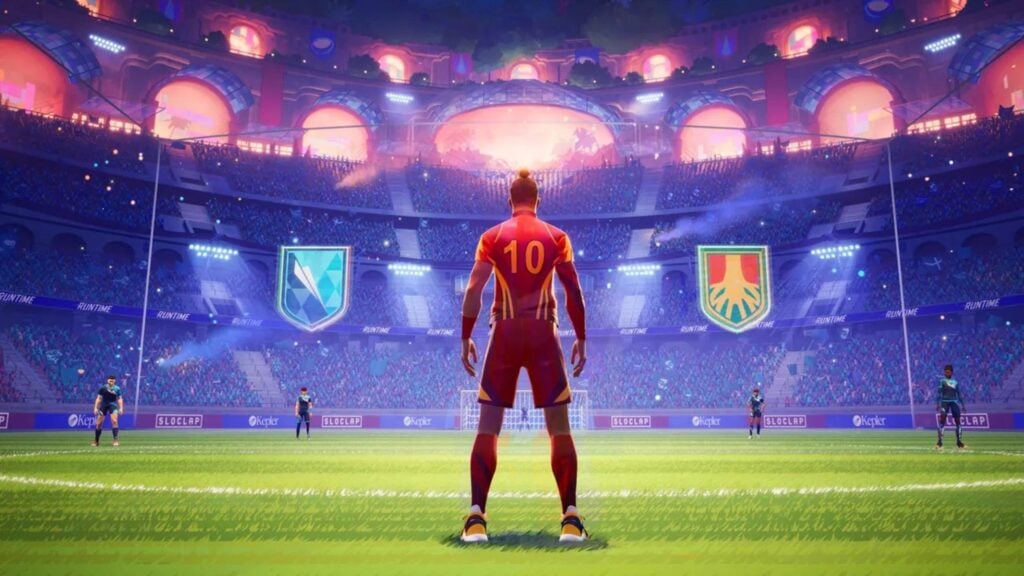
Choosing the Right Match Type
Selecting a match type based on your skill level helps your learning curve. 3v3 matches demand sharper individual skills and faster play. 4v4 strikes a balance with more space and tactical options. 5v5 offers the most tactical depth, great for learning positioning and teamwork strategies.
The Rematch beginner’s guide suggests starting with 5v5 to build macro gameplay understanding before moving to smaller, more intense matches.
Key Tips Summary for Beginners
- Pass the ball frequently; avoid solo dribbling through defenders.
- Manage stamina and avoid reckless sprinting.
- Use walls creatively for passing and shooting.
- Defend smartly by marking players, not chasing the ball.
- Use extra effort sprints tactically for bursts of speed.
- Communicate or use Ball Call to coordinate with teammates.
- Practice often in tutorials and Freeplay.
- Familiarize yourself with your character’s physical playstyle.
- Adjust camera settings for better situational awareness.
Conclusion
This Rematch beginner’s guide equips you with essential knowledge to enjoy and succeed in this fast-paced arcade soccer game. Mastering teamwork, stamina management, skillful ball control, and creative use of the walls will elevate your play and help you climb the ranks. Remember, Rematch rewards smart, cooperative gameplay; so gather your team, practice regularly, and get ready to dominate the pitch!
Read the on-demand Gaming Guides via Gamerative.
FAQs
Can I customize my player’s appearance and skills in Rematch?
Yes, Rematch offers a variety of customization options allowing players to personalize their characters’ looks, outfits, and gear. However, skill attributes are generally balanced to keep gameplay fair, so customization mostly affects aesthetics and player identity rather than in-game performance.
Does Rematch support cross-platform play?
Rematch features cross-platform multiplayer, letting players compete and team up across different consoles and PC. This expands the matchmaking pool and ensures you can enjoy games with friends regardless of the platform they use.
Are there ranked and casual game modes in Rematch?
Yes, Rematch offers both ranked and casual modes. Ranked matches affect your competitive standing and leaderboard position, while casual matches allow for more relaxed play and practice without impacting your rank. This lets players choose the experience that best fits their mood and goals.

